Composition of the Study Group
The long awaited decision of the government to appoint a Chief of Defence Staff (CDS) for the Indian Armed Forces has finally been taken and is a welcome move. This reform would definitely bring better integration and synergy between various services (Army, Navy and the Air Force) and optimise on capability development efforts of the armed forces. It would now be in order to diligently work out the role and responsibilities of the incumbent and to situate him appropriately in the higher defence organisation and national security structures.
A discussion was hosted on the subject at the VIF on August 29, 2019 with the participation of the following:
- Dr Arvind Gupta, Director VIF - In Chair
- Gen NC Vij (Retd) – Former COAS and Director VIF
- Lt Gen RK Sawhney (Retd)
- Lt Gen AS Bedi, DG DIA
- Ambassador Satish Chandra
- Sh G Mohan Kumar, Former Defence secretary
- Lt Gen BS Nagal (Retd), Former C in C , SFC
- Lt Gen Gautam Banerjee (Retd),
- Air Marshal KK Nohwar (Retd), Former VCAS
- Lt Gen Anil Ahuja (Retd), Former Deputy Chief IDS
- Vice Admiral Satish Soni (Retd) , Former C in C ENC
Highlights of recommendations for implementation of the decision are given in succeeding paragraphs. In formulating these recommendations, due cognisance has been given to the comprehensive recommendations made in the Report of the Group of Ministers on National Security (GOM) (2001).
Status and Selection
In consonance with the recommendations of the GOM report, the CDS should be a Four-Star officer, ranking primus inter pares (first amongst equals) with the Service Chiefs. The post should be open to all three services and should not be the monopoly of any particular service. HQ, Integrated Defence Staff (IDS) has matured considerably over the last two decades and is now in a position to provide the CDS with a platform to become fully functional, at par with the Service Chiefs.
Considering the nature of the job and skills required in co-ordination and consensus building, it is desirable that the incumbent is identified through a process of deep selection from amongst eligible three-Star, C-in-C level officers of the three services. Experience of working in the HQ IDS should be a prerequisite for future appointments, if not the first one. The selection should strictly be merit based and not merely based on seniority. Automatic elevation of a Service Chief (serving or retired) to the CDS is not the preferred option on account of shorter residual tenure and constraints of sudden `switch’ from a single service to tri service orientation.
The officer once selected should enjoy a three-year fixed tenure (less if a Service Chief is elevated to CDS) and a higher age of retirement than the Service Chiefs, thereby providing continuity. Feasibility of confirming the appointment through `hearings’ by a select Parliamentary panel can be examined, to instil confidence amongst service personnel and citizens alike about the professional competence and stature of the incumbent. The government may set up a search committee at the appropriate level to recommend a panel of names to the Raksha Mantri.
Relationship with the Defence Secretary
The relationship between the CDS and the Defence Secretary is vital for efficient functioning of the MOD. This aspect has been covered quite comprehensively in the report of the GOM (Para 6.26 and 6.27). The report states that while the CDS would be the `Principal Military Adviser’, the Defence Secretary would be the `Principal Defence Adviser’ to the Raksha Mantri (RM), coordinating functioning of all departments within the ministry and being accountable to the Parliament for expenditure of all Public money allotted to the MOD.
However, the rules of business should be revised to read, “that the responsibility of defence of India will from now on rest with RM and not Defence Secretary”. Thus, while the CDS, like the Service Chiefs, would have a higher status than the Defence Secretary in the warrant of precedence, they would both be heads of respective military and civilian verticals, having direct access and providing independent channels of advice to the RM on respective subjects. The functional interface of HQ IDS with the Defence Secretary would be through the Vice Chief of Defence Staff (VCDS), the present CISC, quite like the present services interface through their Vice Chiefs. There must be single file maintenance between the Service and the Ministry. After the Defence Secretary has endorsed his views, it should be routed through the CDS to the RM.
Role of CDS
The CDS is expected to play a dynamic role in defence planning, modernisation and force restructuring. While the talk of elevating him to a `five star status’ seems irrelevant in the Indian context, it is equally important that he is not kept confined to being a `glorified CISC’.
Some of the roles that could be assigned to the CDS are:
- Exercise operational and administrative command over the ANC (Andaman and Nicobar Command); Cyber and Space Agencies (or Commands, as and when they come up) and Special Operations Division.
- Exercise `administrative control’ over the Strategic Forces Command (SFC), whose `operational control’ rests with the highest political authority.
- Support formulation of National Security Strategy by the NSCS.
- Responsibility for formulation of National Defence Strategy, Defence Planning Guidelines, Raksha Mantri’s Operational Directive. Operational control of three Services will rest with the respective Services Chiefs. The necessary coordination will be carried out by the CDS, after joint discussions with all the Services Chiefs.
- Scenario building for future operational contingencies, to guide capability development plans.
- Formulation of Long Term Integrated Perspective Plan (LTIPP), Services Capital Acquisition Plan (5 or 7 years, as directed) and Technology Perspective and Capability Road Map (TPCR).
- Creating an interface with DRDO for formulation of their Long Term Technology Perspective Plan (LTTPP).
- Directing conduct of `technology scan’ of various weapon systems available or to be developed.
- Directing conduct of strategic assessments for acquisition of major weapon systems.
- Formulating guidelines (in conjunction with MEA) and directing international defence cooperation activities.
- Overseeing and approving intra-service and inter-service prioritisation for acquisitions and aligning these to the Defence Budget, with impediments to be addressed through the DPC.
- Evolving joint operations and joint training doctrines.
- Responsibility for establishment and functioning of the National Defence University, all tri-Service Category A training institutions, policy planning and conduct of foreign language training.
- Planning out of Area Contingencies (OOAC) with the three services and conduct of appropriate joint exercises.
- Building of capabilities for International HADR assistance.
- Creation of tri-Service logistic infrastructure and procedures.
- Tri-Service equipment codification and standardisation.
- Supporting innovation and R&D at DRDO and in private industry.
- Development of an indigenous defence industrial base.
It would be appropriate if the functioning of the recently constituted Defence Planning Committee (DPC) is delegated largely to the CDS. While the NSA brings the political guidance of the PMO to the table, the CDS could functionally steer this body, ensuring implementation of decisions and coordination.
With a senior defence functionary now available to steer this committee, under political guidance, it may also be possible to expand its scope and include elements of the Ministry of Home Affairs engaged in border and internal security, where they function alongside the armed forces. It would thus be appropriate that the CDS is formally designated as Co- Chair or senior member of the DPC, with the three Service Chiefs being `permanent invitees’.
The VCDS (present CISC) should continue to remain the Member Secretary to ensure commitment of HQ IDS in follow-up action. On the civilian side, implementation of DPC decisions in MOD would be ensured by the Defence Secretary.
The CDS would also need to be placed in other security structures so that there is seamless coordination across verticals vested with the responsibility of building India’s Comprehensive National Power (CNP). He should be a member of the inter-ministerial `Strategic Policy Group’ (SPG) whose functioning is coordinated by the Cabinet Secretary and which, since late 2018, is chaired by the NSA. CDS must also be included in the Executive Council of the Nuclear Command Authority, Chaired by the NSA. Inclusion in the Political Council also merits consideration. The CDS would thus be able to participate in the execution of decisions of the Council, through the C-in-C of the Strategic Forces Command.
An institutional interface also needs to be established between the office of the CDS and the National Security Council Secretariat (NSCS) since a coordinated functioning between HQ IDS, NSCS and the DPC will bring synergy in formulating and implementing the National Security Strategy and the National Defence Strategy. A close functional relationship between the NSA and the CDS would greatly benefit national security.
Internally, within the MOD, the most significant contribution of the CDS would be in the formulation of capability development plans for the armed forces and in implementing the acquisitions process through the Defence Acquisition Council (DAC) and its feeder committees [Defence Procurement Board (DPB), Services Capital Acquisition Categorization Committee (SCAPCC) and the Services Capital Acquisition Categorization Higher Committee (SCAPCHC)]. The CDS would be able to oversee formulation of the overall National Defence Strategy and `enforce’ intra-service and inter-service prioritisation for acquisitions. HQ IDS, with organisational structure already available for acquisitions and financial planning under one of its Deputy Chiefs, is best suited to align operationally prioritised acquisitions to the allocated Capital budget, which may now be allotted through the CDS.
On Single Point Military Advice
A significant aspect to be taken note of is that at this initial stage, the emphasis would be more on `single point control’ over capability development and `single point coordination’ between the services for formulation of strategies, concepts, and doctrines. Capability development advice of course would undergo scrutiny of the DAC, with the presence of all stakeholders. Wherever, there is a difference of opinion amongst the Services, all the Chiefs along with CDS will be invited to discuss the issue with the RM and where required even with the PM. This is the process adopted in all the countries including the US. True integration amongst the MoD and Services will be through cross posting of more than 50% officers from the Services at the decision making level with the MoD.
Single point operational advice is still some distance away, since the potential incumbents for the CDS post have not really grown through an integrated tri-Service system. Government should have the freedom to consult respective Chiefs whenever it is expedient. The Service Chiefs would need to step forth and support the CDS, to enable a `single voice articulation’ of military advice.
On Theatre Commands
A widely held view prevails that the appointment of the CDS must be concurrent with the creation of integrated, tri-Service, Theatre Commands and that he should exercise operational command over them. This recommendation and the proposition of consolidating 17 Service-specific commands (ostensibly with huge financial savings), will be difficult to implement. Tri-Service commands entail having commanders and staff with reasonable understanding of operational planning, weapons and equipment management, operational logistics, doctrine and training aspects, and personnel policies of all three services.
This comes through `growing with sister services’ over the years, cross-postings, institutional and hands-on training. Unfortunately, India has not yet accumulated this type of professional experience. The related perspective that with the CDS and Joint Operational Commands in place, the Chiefs should be assigned a `Staff role’, will be self-defeating, at this nascent stage.
It would be prudent to initially implement the decision with respect to the CDS in a stable system, without creating turmoil at all levels of organisational structure. Post stabilisation of the office of CDS, the leadership could consider establishing theatre commands on considerations of external environment, threat perception, availability of resources etc. This could be a few years down the line and may be deliberated upon separately.
MOD Reforms
Recommendations given above would enable efficient implementation of this major defence reform. The system would provide two parallel and complementary channels of advice, the military and bureaucratic advice to the RM. CDS would provide a single point for coordination, collation, analysis and rendering of professional military advice. This structure fits into the existing organisational and functional structure with respective Vice Chiefs and Defence Secretary providing the functional interface convergence between the two streams. It would benefit the system if there is cross posting of civilian officers in the military stream, under the CDS and of military officers into the civilian stream under the Defence secretary. To be effective, maximum cross postings should be considered at the Joint Secretary (JS) level.
Legally, MoD also needs to review the three armed forces Acts and align them with the role envisaged for the CDS. Additional legislation, in the tri-service/ Integrated structures domain could also be considered to strengthen the CDS.
Conclusion
In implementing the landmark defence reform of appointing a CDS for the Indian Armed forces, it will do the nation and the services good to lay greater emphasis on substance of performance and plugging lacuna in synergised defence planning than on getting embroiled in issues of hierarchical pecking order and protocol. The system is comfortable accepting a four star, supported by the HQ IDS, which has been in place for nearly two decades now. For the model to succeed, the CDS would require to be fully supported by the RM, NSA, the Service Chiefs and the Defence secretary. Creation of theatre commands in the Indian context is still some distance away and is not recommended to be attempted at the present juncture, concurrent to appointing the CDS. The priority should be to use this office for synergised capability development. For operational advice, respective service chiefs would need to be kept incorporated for some time, till the future CDS start coming with extensive tri service experience. Lastly, a good CDS will be one who has perfected the art of working through tact, consensus building and mutual respect with his other counterparts. This will be his strength.
Image Source: https://upload.wikimedia.org/wikipedia/commons/a/a9/Indian_Ministry_of_Defence-1.jpg

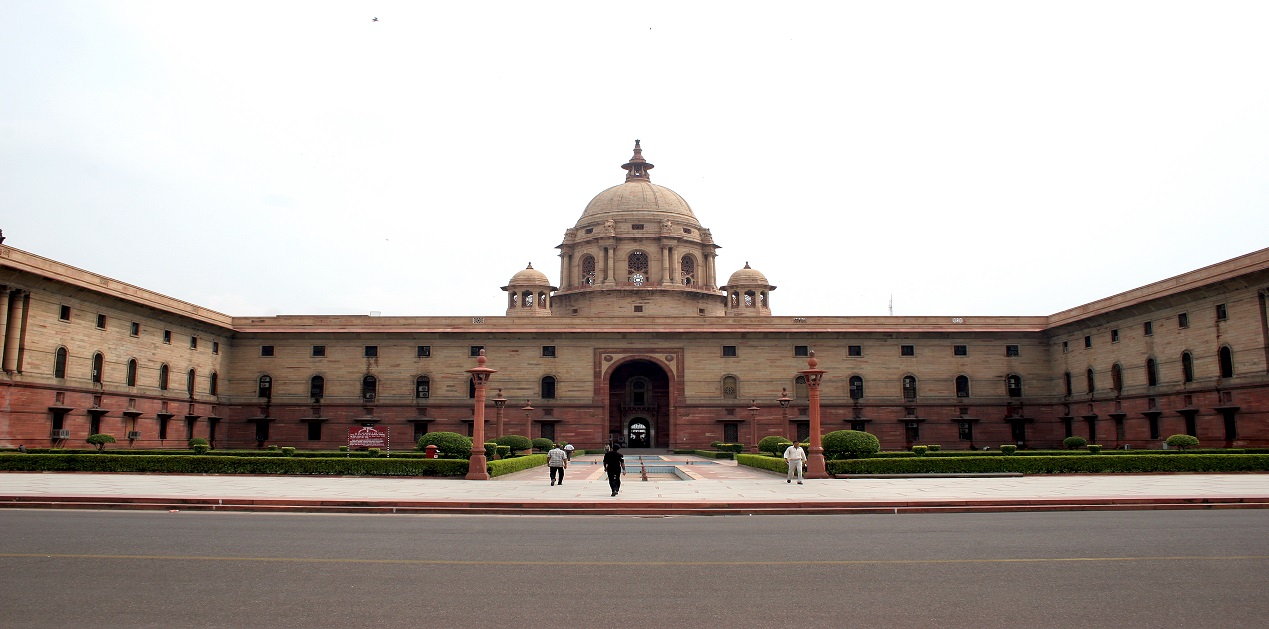

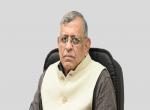
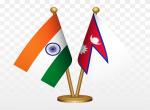
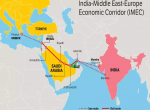
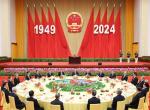

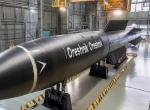

very good concept
Post new comment